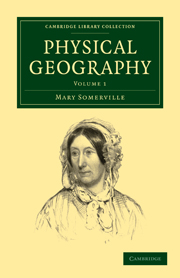Summary
Taking the natural divisions of the continent alone into consideration, Central America may be regarded as lying between the 7th and 20th parallels of north latitude, and consequently in a tropical climate. The narrow tortuous strip of land which unites the continents of North and South America stretches from S.E. to N.W. about 1000 miles, varying in breadth from 30 miles to 300 or 400.
As a regular chain, the Andes terminate suddenly at the plain of Panama, but as a mass of high land they continue through Central America and Mexico, in an irregular mixture of table-lands and mountains. These table-lands, however, differ from those in the Andes of South America, inasmuch as they are not bounded on each side by Cordilleras following the direction of the chain, but are traversed by ranges running over them in all directions, or studded by mountains. The mass of high land which forms the central ridge of the country, and the watershed between the two oceans, is very steep on its western side, and runs near the coast of the Pacific, where Central America is narrow; but to the north, where it becomes wider, the high land recedes to a greater distance from the shore than the Andes do in anyother part between Cape Horn and Mexico.
- Type
- Chapter
- Information
- Physical Geography , pp. 158 - 166Publisher: Cambridge University PressPrint publication year: 2009First published in: 1848



